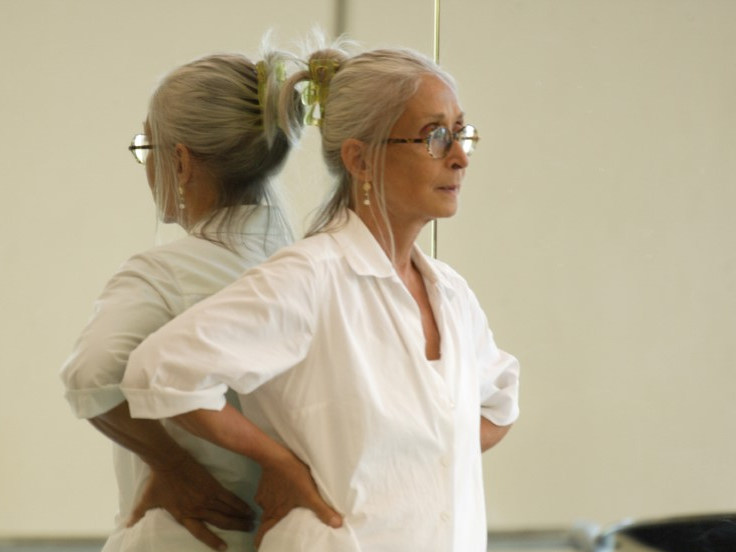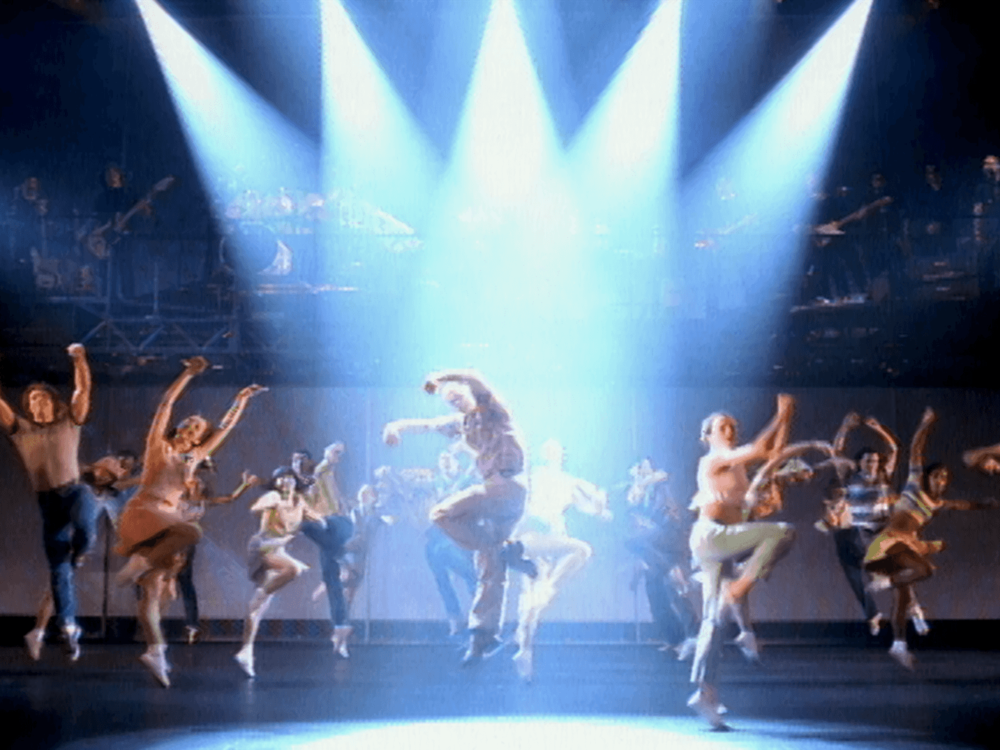Section Branding
Header Content
'Dance Can Give Community': Twyla Tharp On Choreographing Through Lockdown
Primary Content
Neither the pandemic nor age can keep legendary choreographer Twyla Tharp from her work. During the height of the COVID-19 lockdown, Tharp, now 79, choreographed several dances through through Zoom. One was with four dancers — each of whom was in a different time zone.
"One dancer was in New York at noon. One dancer was on the West Coast before breakfast. One dancer was in Denmark five hours ahead, and one dancer was in St. Petersburg working through their dinner hour," Tharp says. "Nothing was capable of keeping us from having community. And that's what dance can give — dance can give community."
It's not the first time Tharp has worked in unusual conditions. In the 1960s, Tharp and her company of dancers performed in parks and malls, and on subway platforms and rooftops. "If it was kind of level, it was fair territory," she says.
Tharp went on to choreograph for Mikhail Baryshnikov, the Joffrey Ballet, the Royal Ballet, the New York City Ballet and the American Ballet Theatre. She's also collaborated with David Byrne and Billy Joel on Broadway shows.
Tharp is known for mixing ballet with other styles of dance: "I had always felt that one dancer should be able to dance across the line," she says. "That is to say: When I started working in New York, you were either modern dancer, or you were a ballet dancer. I thought that was ridiculous, because I could be both a ballet dancer and a modern dancer, so shouldn't everybody else be able to do that?"
Tharp is the subject of Twyla Moves, a new documentary by the PBS series, American Masters.
Interview highlights
On starting to dance as a small child
I started with music training both in piano and violin and percussion, and the dancing came after the fact. But on the other hand, my mother was a concert pianist and as a very tiny child baby, I was going to her classes. And so I was always wiggling and then I could crawl and then I could sort of hop. So I've always been dancing to music.
On what made her early choreography different from others
I think the first thing was to eliminate the idea of steps or styles — it was to get to fundamentals of movement. And we were looking for very common, [ordinary] shared modes of movement. By ordinary, I mean not extremely sophisticated in training folks might have, and then how could that be extended and become more challenging for us who had had the advantage of that kind of training. ...
When I was beginning, I wanted to go back to the very mechanics: You either start on the right side or the left side. You either coordinate in opposition to the forward moving leg or parallel to the forward moving legs. You're either moving forwards or you're moving backwards or laterally, side-to-side. All of these kinds of really engineering questions are [a] kind of launch point, because I didn't want to take anything for granted. I wanted to feel as though my fundamentals were sound.
On performing dance without music
Music is much more comfortable for the general public than movement. I often say: Take one phrase of movement and put on happy music, [and] the audience thinks it's a happy dance. Put on sad music and they'll think it's a sad dance, and the movement is exactly the same. So I wanted to try to see what the emotional resonance of movement was. What excited people? What was provocative? What would they register? Not all of those, but many visual questions were asked. And that wouldn't have been possible with music, because music is so overpowering.
On why she wanted to start an all-women dance company in 1966
I think we knew there was a bias in the world of art across the boards, whether it was music, painting, sculpture, literature [or] dance. And we wanted to fortify ourselves in such a way that we could put forth what we thought was our strongest suit. And our strongest suit was a lot of technique and a lot of incredible ensemble work, but also strong individual voices. ... We all had singular qualities, and that was clearer if we were all women, then had a man been in the group, we would have been the women [and] he would ... have been the man, and that would have become the distinctive, defining characteristic rather than the individual qualities of each human being.
On wanting dancers with different body types in her company
In order to be inclusive, you need to have differentiation. So by having [different dancers who are] tall, short, classically trained, [without] classic training, [a] great athlete — all of these various qualities would redefine and give a three-dimensional quality to the work that obviously is lacking if there is a body type that is featured throughout the ensemble. One understands that need [for] fungibility in professional companies because if one dancer goes out, they want to be able to put another one in as directly and efficiently as possible and hopefully in the same costume. It's all the bottom line, right? To me, that was not what dancing was about and it still isn't.
On choreographing men who didn't want to be taught by a woman
I'm a very strong jumper. And I jumped higher, longer than most of the men. So it was like, "OK, guys, let's go." That's how I've basically always been able to work with men: through strength and by a kind of challenge. ... But, you know, men can be very arrogant — we all can. ... If they were given the opportunity to work around that bias, many of them would, and gratefully. I mean, you'll see some male dancers in Deuce Coupe ... were doing kind of extraordinary things. I think they were glad to be asked to work in a different way, eventually. It took a little doing, perhaps. ... A couple never came around, but that's OK.
On what her body is capable of at age 79
This last year, with the pandemic and its disruptions in terms of routine, discipline, just ordinary day-to-day activities, the body doesn't know itself at the moment. So I can't tell you what I can ask it to do until I refamiliarize myself. And I'm in the process of doing that. ... Whenever I've finished one of these big projects, I'm out of shape, and that's just a given. So I've been in this position before, not at this age, but I know that it is a commitment to get back into shape. It's not going to happen on its own accord.
Lauren Krenzel and Seth Kelley produced and edited this interview for broadcast. Bridget Bentz, Molly Seavy-Nesper and Beth Novey adapted it for the Web.
Copyright 2021 Fresh Air. To see more, visit Fresh Air.


